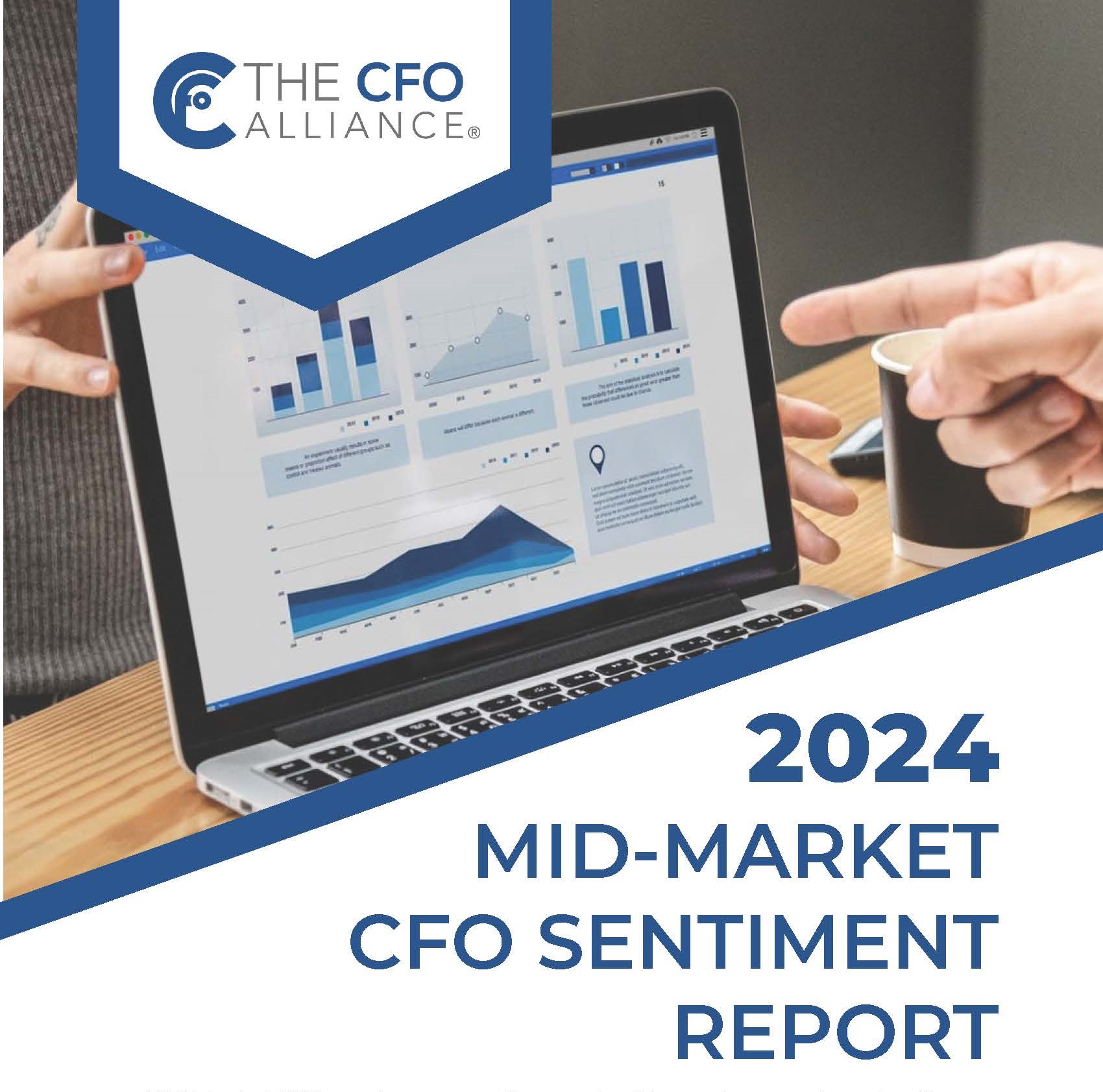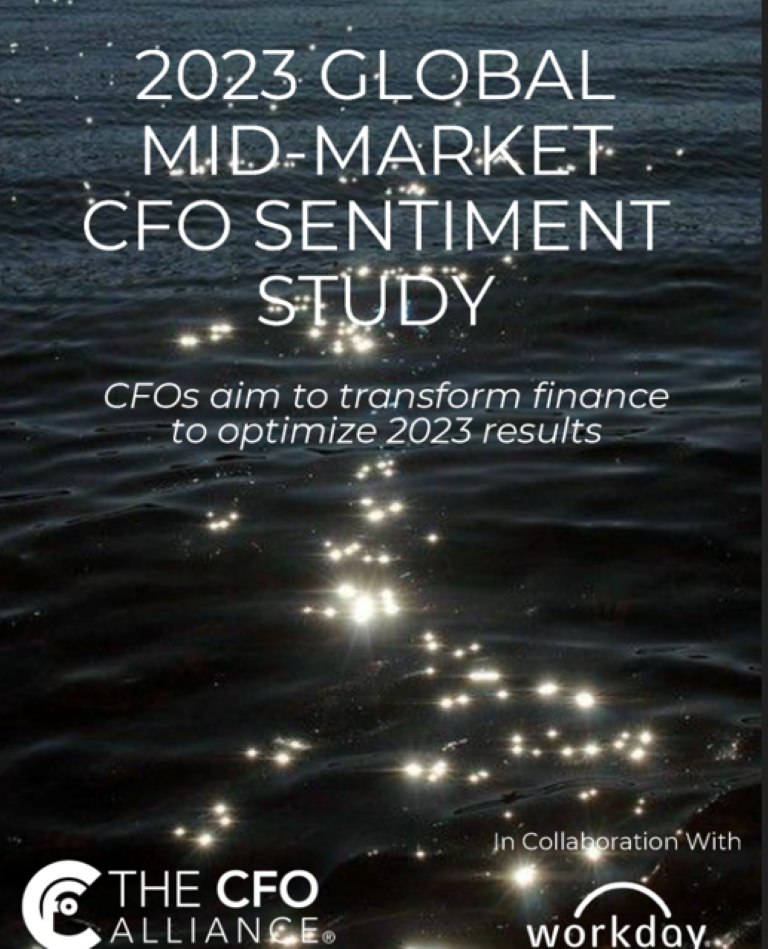CFO Value Creation in 2023: Ensuring Better Basics in Top-line Business Forecasting
How CFOs Can Improve Forecasting Accuracy with a Basic Understanding of Branding & Marketing Strategy
Here’s a recurring scenario. Marketing has projected some sporty metrics for the demand generation campaigns they are implementing and Sales has rolled up their forecast predicting above plan results. But, CFOs, let’s just say the quiet part out loud.
“How much should the numbers be de-risked?”
Because markets behave like complex, self-guided organisms demand is inherently hard to predict. Consequently, revenue forecast inputs from the Marketing and Sales functions are often amorphous and fuzzy. You’re not alone if the forecasts you get raise questions and sometimes eyebrows rather than providing confidence-inspiring rationale behind them.
Relatively speaking, if your sales cycle is quick and your go-to-market calls for conservative “harvesting” with recurring demand coming from a stable, established customer base, a simple trend line can help you forecast relatively assuredly. But, if you’re facing stretch goals as part of a conquest or growth strategy, forecasting can feel like pure guesswork. If guesswork becomes frequently repetitive it can lead to a habit of cutting forecasts thinking that results that beat it will be viewed as good news. But the objective is forecast accuracy regardless of what the numbers say or temp for the sake of not over-promising. Truth in numbers and accuracy specifically is a business metric and a management imperative. And the CFO is the standard bearer for it.
This post on the subject of Branding and Marketing Strategy follows Part 1 where we dealt with the importance of improving Market Understanding & Forward Visibility. All three parts of this series advocate the need for “better basics” in good top-line forecasting rigor and are intended to help the CFO be a leader at the forecast table.
Determining if Your Enterprise is a Company or a Brand is an Important Factor of Top-line Forecasting
Many enterprises are transaction-centric commodity pushers operating almost entirely using a push model to generate demand. That’s not all bad and many companies logically have to start out in that state. Both the marketing and selling strategy are usually product-led and pricing-led and this model can certainly achieve relative success in several commodity categories. Assuming product and price are in line with buyer’s view of need and value respectively, channel strength then comes into play when optimizing this model for growth. The more your product is where customers want to buy the product category, the more that revenue growth is possible with a push-centric demand generation model. Whether using indirect channels, fielding a direct sales force, or selling online, the level of qualified lead generation, market coverage, channel sell-through capability, and selling strategy rule for forecasting purposes. And if this aptly describes your enterprise, simply speaking, assuring that the 4 Ps of Product, Price, Place, and Promotion are relevant and reaching your buyers is what to test for in the forecasting process. Brands on the other hand are different.
Branding is Like The Ocean; It’s a Deep Subject
Brand strategy is part of a comprehensive marketing strategy, but in the context of forecasting, it has been called out separately because it can materially affect the commercial power of an enterprise and create positive uplift helpful for growth missions. Space limits the extent to which branding can be dealt with here, but enterprises characterized as a brand or house of brands enjoy the force multiplier effect of brand pull. Brands up the power of the 4 Ps; they represent market belief systems that can self-propel buyers to act without constant prodding interventions. The best of brands are immutable and they resonate viscerally and vicariously with their markets. They have told the right story to the right people the right way and generated the awareness and positive predisposition needed to be considered when buyers are in the market to buy. They also enjoy the most loyal following and have earned market permission to set their industry and product category agendas.
Most assuredly, a brand takes money and time to develop sufficiently to generate market pull because it must first generate enough awareness and favorability to be considered in the buying process. Breaking through today’s marketing noise and messaging clutter is not an easy task. So, branding is not “an overnight thing” except for a precious few successes in history. Think Apple.
But closer to home think of investing in building a brand like adding money to a savings account. Just as steady deposits can cumulatively build wealth over time, brands can be built the same way. And it’s not always about spending levels when brand-building. It’s about smarter marketing that builds brands quicker and more efficiently and helps the push part of the demand generation model yield better results.
Achieving a state of simultaneous branding should be a business objective. That’s when both a push and pull engine exist and are in appropriate balance for a specific growth strategy. If your enterprise has achieved the bona-fide status of a brand relative to others in your space, expect additional revenues from new customers and repeat/cross-sell/up-sell revenues from current ones.
With company or brand determined, you are ready to evaluate the overall marketing strategy in the forecasting process.
Marketing Strategy: Assessing Its Efficiency and Effectiveness for Forecasting
The first of 95 theses expressed in The Clue Train Manifesto first appearing in 1999 on the web was “Markets are conversations”. It warned companies and brands of being self-important and void of genuinely human two-way dialog with their markets. The authors also forecasted that digital networking would enable highly collaborative communities of buyers to form. They would exchange information about their experiences with products and services and eventually trust each other much more so than whatever the marketing communications of companies and brands were pontificating. That all came true. So, whether you’ve determined that your enterprise is a company or a brand, Job 1 is to make sure a marketing strategy convey humanness, genuineness, attentiveness, and openness in marketing communications.
At a high level but still pragmatic for forecasting purposes, a marketing strategy essentially answers key questions with sufficient facts, rationale, and evidence needed to generate an 85-90% confidence level that forecasted business outcomes will be achieved. Here are the big ones:
- Who are you?
- What do you do and why should buyers care?
- Why do you do it?
- Where will you win?
- Why will buyers choose you?
- How will you win?
- What is the business value of winning?
As noted in Part 1 of this series, the path to accurate forecasting begins with market understanding. Know thy customer or client. However, because we now operate in a post-demographic world, the conventional boundaries for identifying and segmenting target buyers are amorphous and are no longer valid for precise opportunity targeting and forecasting. So, informed with the answers to the questions above, you’re essentially evaluating the level of knowledge the enterprise has of its buyers and several aspects of marketing strategy applicable for the forecasting process.
With a constant eye on competition, supply chains, and economic and geopolitical forces, you’re assessing:
- the market relevance and strength of the value proposition(s) for the enterprise’s offerings
- the strategy’s ability to reach buyers and provide seamless access for them across platforms and in whatever manner that they are factually known to prefer
- whether acute and intimate knowledge of buyers and intenders is built into the targeting model and whether the model is backed by person-level data and behavioral attributes that extend beyond conventional demographic profiling
- the opportunity for buyer segment “cross-over” defined as common needs, interests, preferences, and intentions that blur the business-as-usual demographic segment boundaries
- whether the demand generation model utilizes creatively differentiated and actionable messaging in the communication strategy and whether it will reach current customers and intenders with sufficient frequency to be worth the investment
- the level of importance that emotional touch points play in the buyer influencing process and whether the brand story is comprehensive of any of the 9 emotional factors known to be relevant to activating feelings beyond liking (See Part 1 on modeling the mind of the buyer)
- whether leading indicators of buyer behavior change are incorporated into analytics so that futuristic insights and predictive data modeling are part of the forecasting process
- if the enterprise understands why it wins, and why it loses, and if not, consider a third party to conduct a formal won/lost analysis periodically for honest and factual insights and then implement the countermeasures that combat losing
- whether the brand story uses a human voice or whether its laden with “corporate conceit” which often takes the form of arrogant and hollow proclamations that are not meaningful or actionable by buyers
Solid core knowledge of the Strategy, Marketing, and Sales ecosystem coupled with the CFO’s power of questions will result in more bankable forecasts. Hopefully, CFOs can utilize these basic principles and perspectives to lead the cross-functional forecasting process by example.
Up Next
Part 3 on Selling & Sales Management. And to find out more about what your peers are feeling, thinking and doing in 2023, download the 2023 Global Mid-Market CFO Sentiment Study here.
Engage and Grow with Us
Now in our 10th year, The CFO Alliance has been championing CFOs as leaders of change and growth. Discover more about this dynamic 9,000-Member peer group and our learning and collaborative information sharing platform. Make connections that count. Become a Member, or upgrade your current membership here.




